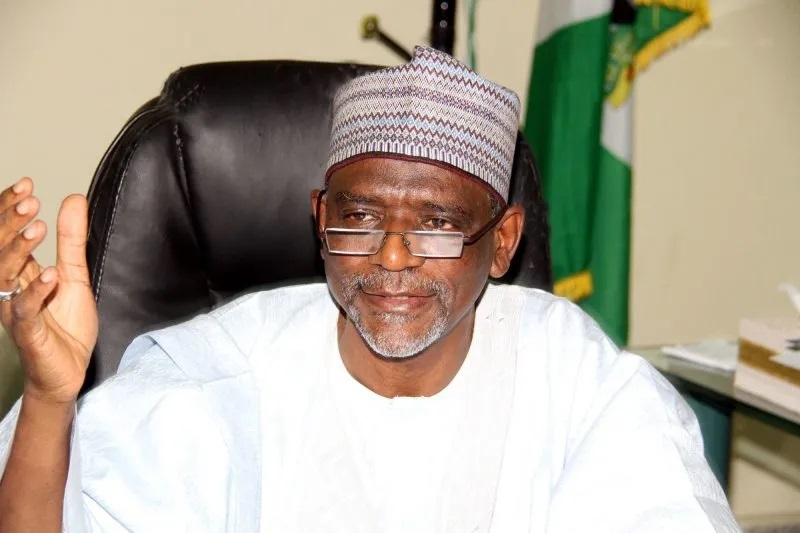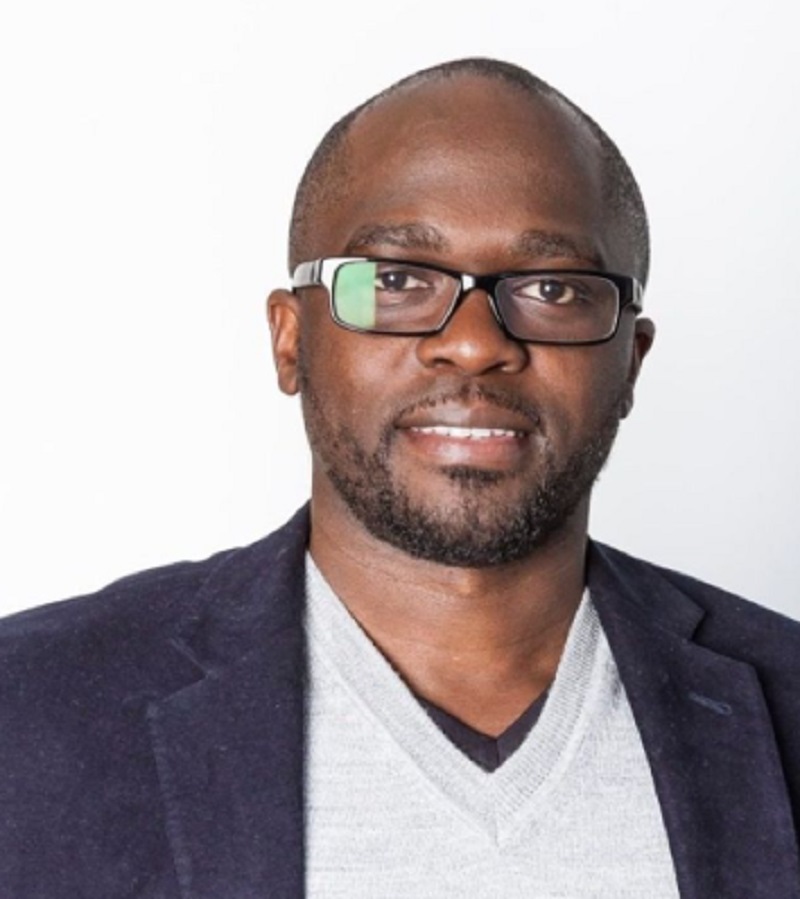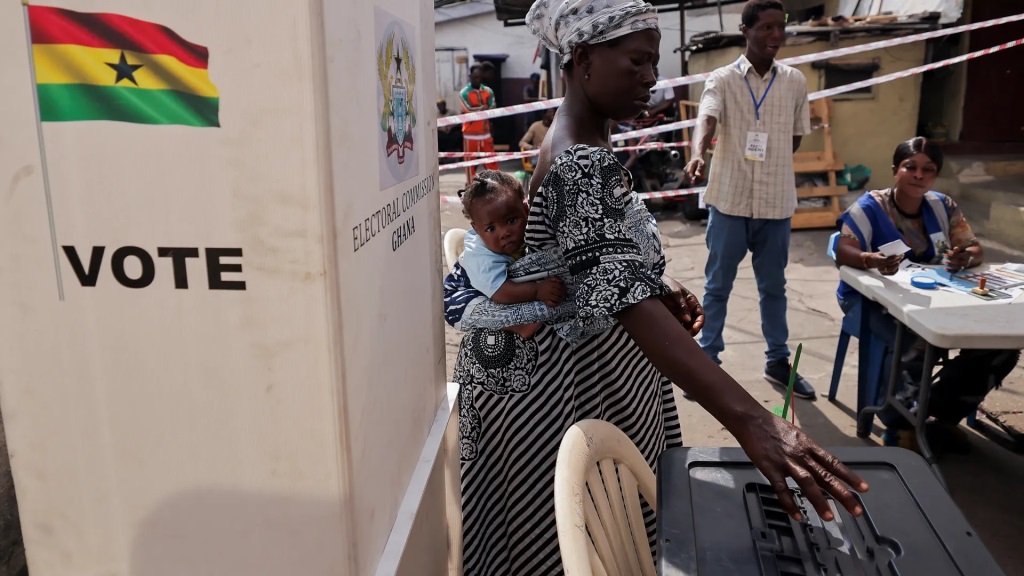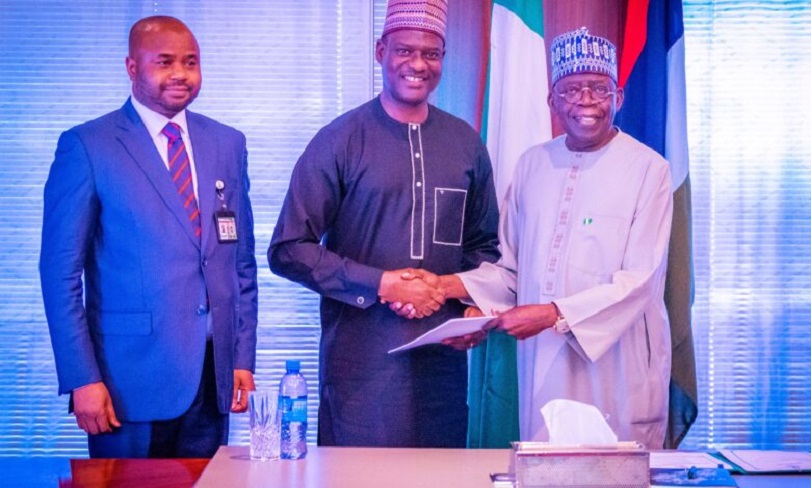Feature/OPED
Leadership Judgment and Adamu Adamu Confession

By Jerome-Mario Chijioke Utomi
In October 2022, when it was first mentioned that a Nigerian national honour of Commander of the Order of the Niger (CON) was to be conferred on the Minister of Education, Mallam Adamu Adamu, by President Muhammadu Buhari, there was a flood of opposition from all quarters.
For instance, the National Association of Nigerian Students (NANS), in a statement, said: “Without considering the fact that Nigerian universities students have been at home for close to eight months as a result of the failure of the federal government to meet the demands of Academic Staff Union of Universities (ASUU) and to properly fund education, the Minister of Education, Mallam Adamu Adamu, is scheduled to be conferred with the National Honour of Commander of the Order of Niger (CON).”
But as native wisdom proclaims, ‘the protestation of the innocent chick does not prevent or stall the sacrifice. If anything, the protestations enriched the sacrifice and hastened its value and efficacy’. Likewise, the flood of opposition did not stop President Buhari from conferring the award on Adamu Adamu.
However, a few weeks after the award was conferred on him, he confirmed the fears of Nigerians by admitting that he failed as the nation’s Minister for Education as he could not solve several challenges he ought to have solved despite being the longest-serving education minister.
The Minister highlighted that, from out-of-school children, who have increased during his time in office, to challenges of ASUU and other challenges bedevilling the tertiary education system, he could not provide the needed solution. The Minister spoke at the 66th National Council on Education (NCE) in Abuja.
Viewed peripherally, Adamu’s ‘confessional statement’ and admission of failure may not be out of place, particularly as experts believe that when leaders open their failures or weakness(s), it shows followers that they are genuine and approachable-human and humane. In the same vein, it is believed in some quarters that when a leader exposes his weakness or admits his/her failures, it offers such a leader valuable protection. When one fails to expose such failures, stakeholders, observers and media professionals may discover it and get it blown out of proportion or, better still, even something worse.
More intrinsically, while Adamu Adamu could marginally be overlooked or forgiven, this piece holds the opinion that he is not alone in this failure. In fact, more blame resulting from Adamu Adamu’s failure should be placed on President Muhammadu Buhari’s table for his recognition of patronage/national award on the minister that performed abysmally below average.
Most pathetically, it is evident that Mr President, by the above act, demystified the sacredness of national honours and showed Nigerian students that his administration does not regard the youths as being critical stakeholders as far as national development is concerned.
“To say that a man under whose watch university students have been at home for close to eight months because of the strike embarked upon by lecturers got recognised by the President to be conferred with national honours is a direct attack on the students’.
But by far the most critical ill inherent in this conversation is the painful awareness that Mr President had earlier, in the face of the legion of challenges bedevilling the country, claimed that he has given his best for the country while adding that he is not expecting any appreciation from Nigerians.
The president, who spoke in an exclusive interview with NTA, said, “What else can I do for this country? I have given my best, I hope after I leave, Nigerians will reflect. I am not expecting any appreciation but what I am expecting is for Nigerians to say yes, this man has done his best.”
The questions arising from Mr President’s comment are; is Mr President’s effort good enough? Could his assertion on performance be truly viewed as objective and correct? Has President Muhammadu Buhari indeed and, in truth, provided a solution to the nation’s hydra-headed challenges? Or has his administration, in the estimation of many, not become a reality that Nigerians now worry about? Is Mr President’s claim on performance in line with economic realities on the streets of Nigeria? Is his argument on feat in accord with a series of reports from agencies and other interventionist groups?
Out of many, the report from the National Bureau of Statistics (NBS), published Q2:2020 labour statistics, says something ‘interestingly’ different.
The referenced report revealed that Nigeria’s second-quarter unemployment rate among young people (15-34 years old) was 34.9%, up from 29.7%, while the rate of underemployment for the same age group rose to 28.2% from 25.7% in Q3, 2018. These rates were the highest when compared to other age groupings. Nigeria’s youth population eligible to work is about 40 million, out of which only 14.7 million are fully employed, and another 11.2 million are unemployed.
For a better understanding of where this piece is headed, youth in every society, says a study report, has the potential to stimulate economic growth, social progress and our national development. The strategic role of youths in the development of different societies of the world, such as Cuba, Libya, China, Russia and Israel, is obvious. Youth unemployment is potentially dangerous as it sends a signal to all segments of Nigerian society. Here in Nigeria, the rate of youth unemployment is high, even during the period of economic normalcy, i.e. the oil boom of the 1970s (6.2%), 1980s (9.8%) and the 1990s (11.5%). Youth unemployment, therefore, is not a recent phenomenon.
But if what happened in the 1980s/90s were challenges of sorts, what is happening presently, going by the report by the National Bureau of Statistics (NBS), is a crisis.
Thus, as Nigerians continue to groan under the present harsh economic situation in the country, some realities stand out.
One, the country is awash with captivating development visions, policies and plans, but impoverished leadership and corruption-induced failure of implementation of development projects on the part of the political leaders are responsible for the under-development. Secondly, under the present administration, no nation best typifies a country in dire need of peace and social cohesion among her various sociopolitical groups than Nigeria, as myriads of sociopolitical contradictions have conspired directly and indirectly to give the unenviable tag of a country in constant search of social harmony, justice, equity, equality, and peace.
Thirdly, the country’s economy has shown its inability to sustain any kind of meaningful growth that promotes the social welfare of the people. The result can be seen in the grinding poverty in the land. The running of our country’s economy continues to go against the provisions of our constitution, which stipulates forcefully that the economy’s commanding heights must not be concentrated in the hands of a few people.
The continuous takeover of national assets through dubious (privatization) programs by politicians and their collaborators is deplorable and clearly against the people of Nigeria. The attempt to disengage governance from public sector control of the economy has only played into the hands of private profiteers of goods and services to the detriment of the Nigerian people.
The greatest and immediate danger to the survival of the Nigerian state today is the unwarranted, senseless, premeditated, well organized and orchestrated killings across the country, particularly when almost all the time the killers are never apprehended, even when they make self-implicating statements about such killings.
Life in Nigeria, quoting Thomas Hobbs, has become nasty, brutish, and short. Nigerians have never had it so bad.
Utomi Jerome-Mario is the Programme Coordinator (Media and Policy) at Social and Economic Justice Advocacy (SEJA), Lagos. He can be reached via [email protected]/08032725374
Feature/OPED
The Future of Payments: Key Trends to Watch in 2025

By Luke Kyohere
The global payments landscape is undergoing a rapid transformation. New technologies coupled with the rising demand for seamless, secure, and efficient transactions has spurred on an exciting new era of innovation and growth. With 2025 fast approaching, here are important trends that will shape the future of payments:
1. The rise of real-time payments
Until recently, real-time payments have been used in Africa for cross-border mobile money payments, but less so for traditional payments. We are seeing companies like Mastercard investing in this area, as well as central banks in Africa putting focus on this.
2. Cashless payments will increase
In 2025, we will see the continued acceleration of cashless payments across Africa. B2B payments in particular will also increase. Digital payments began between individuals but are now becoming commonplace for larger corporate transactions.
3. Digital currency will hit mainstream
In the cryptocurrency space, we will see an increase in the use of stablecoins like United States Digital Currency (USDC) and Tether (USDT) which are linked to US dollars. These will come to replace traditional cryptocurrencies as their price point is more stable. This year, many countries will begin preparing for Central Bank Digital Currencies (CBDCs), government-backed digital currencies which use blockchain.
The increased uptake of digital currencies reflects the maturity of distributed ledger technology and improved API availability.
4. Increased government oversight
As adoption of digital currencies will increase, governments will also put more focus into monitoring these flows. In particular, this will centre on companies and banks rather than individuals. The goal of this will be to control and occasionally curb runaway foreign exchange (FX) rates.
5. Business leaders buy into AI technology
In 2025, we will see many business leaders buying into AI through respected providers relying on well-researched platforms and huge data sets. Most companies don’t have the budget to invest in their own research and development in AI, so many are now opting to ‘buy’ into the technology rather than ‘build’ it themselves. Moreover, many businesses are concerned about the risks associated with data ownership and accuracy so buying software is another way to avoid this risk.
6. Continued AI Adoption in Payments
In payments, the proliferation of AI will continue to improve user experience and increase security. To detect fraud, AI is used to track patterns and payment flows in real-time. If unusual activity is detected, the technology can be used to flag or even block payments which may be fraudulent.
When it comes to user experience, we will also see AI being used to improve the interface design of payment platforms. The technology will also increasingly be used for translation for international payment platforms.
7. Rise of Super Apps
To get more from their platforms, mobile network operators are building comprehensive service platforms, integrating multiple payment experiences into a single app. This reflects the shift of many users moving from text-based services to mobile apps. Rather than offering a single service, super apps are packing many other services into a single app. For example, apps which may have previously been used primarily for lending, now have options for saving and paying bills.
8. Business strategy shift
Recent major technological changes will force business leaders to focus on much shorter prediction and reaction cycles. Because the rate of change has been unprecedented in the past year, this will force decision-makers to adapt quickly, be decisive and nimble.
As the payments space evolves, businesses, banks, and governments must continually embrace innovation, collaboration, and prioritise customer needs. These efforts build a more inclusive, secure, and efficient payment system that supports local to global economic growth – enabling true financial inclusion across borders.
Luke Kyohere is the Group Chief Product and Innovation Officer at Onafriq
Feature/OPED
Ghana’s Democratic Triumph: A Call to Action for Nigeria’s 2027 Elections

In a heartfelt statement released today, the Conference of Nigeria Political Parties (CNPP) has extended its warmest congratulations to Ghana’s President-Elect, emphasizing the importance of learning from Ghana’s recent electoral success as Nigeria gears up for its 2027 general elections.
In a statement signed by its Deputy National Publicity Secretary, Comrade James Ezema, the CNPP highlighted the need for Nigeria to reclaim its status as a leader in democratic governance in Africa.
“The recent victory of Ghana’s President-Elect is a testament to the maturity and resilience of Ghana’s democracy,” the CNPP stated. “As we celebrate this achievement, we must reflect on the lessons that Nigeria can learn from our West African neighbour.”
The CNPP’s message underscored the significance of free, fair, and credible elections, a standard that Ghana has set and one that Nigeria has previously achieved under former President Goodluck Jonathan in 2015. “It is high time for Nigeria to reclaim its position as a beacon of democracy in Africa,” the CNPP asserted, calling for a renewed commitment to the electoral process.
Central to CNPP’s message is the insistence that “the will of the people must be supreme in Nigeria’s electoral processes.” The umbrella body of all registered political parties and political associations in Nigeria CNPP emphasized the necessity of an electoral system that genuinely reflects the wishes of the Nigerian populace. “We must strive to create an environment where elections are free from manipulation, violence, and intimidation,” the CNPP urged, calling on the Independent National Electoral Commission (INEC) to take decisive action to ensure the integrity of the electoral process.
The CNPP also expressed concern over premature declarations regarding the 2027 elections, stating, “It is disheartening to note that some individuals are already announcing that there is no vacancy in Aso Rock in 2027. This kind of statement not only undermines the democratic principles that our nation holds dear but also distracts from the pressing need for the current administration to earn the trust of the electorate.”
The CNPP viewed the upcoming elections as a pivotal moment for Nigeria. “The 2027 general elections present a unique opportunity for Nigeria to reclaim its position as a leader in democratic governance in Africa,” it remarked. The body called on all stakeholders — including the executive, legislature, judiciary, the Independent National Electoral Commission (INEC), and civil society organisations — to collaborate in ensuring that elections are transparent, credible, and reflective of the will of the Nigerian people.
As the most populous African country prepares for the 2027 elections, the CNPP urged all Nigerians to remain vigilant and committed to democratic principles. “We must work together to ensure that our elections are free from violence, intimidation, and manipulation,” the statement stated, reaffirming the CNPP’s commitment to promoting a peaceful and credible electoral process.
In conclusion, the CNPP congratulated the President-Elect of Ghana and the Ghanaian people on their remarkable achievements.
“We look forward to learning from their experience and working together to strengthen democracy in our region,” the CNPP concluded.
Feature/OPED
The Need to Promote Equality, Equity and Fairness in Nigeria’s Proposed Tax Reforms

By Kenechukwu Aguolu
The proposed tax reform, involving four tax bills introduced by the Federal Government, has received significant criticism. Notably, it was rejected by the Governors’ Forum but was still forwarded to the National Assembly. Unlike the various bold economic decisions made by this government, concessions will likely need to be made on these tax reforms, which involve legislative amendments and therefore cannot be imposed by the executive. This article highlights the purposes of taxation, the qualities of a good tax system, and some of the implications of the proposed tax reforms.
One of the major purposes of taxation is to generate revenue for the government to finance its activities. A good tax system should raise sufficient revenue for the government to fund its operations, and support economic and infrastructural development. For any country to achieve meaningful progress, its tax-to-GDP ratio should be at least 15%. Currently, Nigeria’s tax-to-GDP ratio is less than 11%. The proposed tax reforms aim to increase this ratio to 18% within the next three years.
A good tax system should also promote income redistribution and equality by implementing progressive tax policies. In line with this, the proposed tax reforms favour low-income earners. For example, individuals earning less than one million naira annually are exempted from personal income tax. Additionally, essential goods and services such as food, accommodation, and transportation, which constitute a significant portion of household consumption for low- and middle-income groups, are to be exempted from VAT.
In addition to equality, a good tax system should ensure equity and fairness, a key area of contention surrounding the proposed reforms. If implemented, the amendments to the Value Added Tax could lead to a significant reduction in the federal allocation for some states; impairing their ability to finance government operations and development projects. The VAT amendments should be holistically revisited to promote fairness and national unity.
The establishment of a single agency to collect government taxes, the Nigeria Revenue Service, could reduce loopholes that have previously resulted in revenue losses, provided proper controls are put in place. It is logically easier to monitor revenue collection by one agency than by multiple agencies. However, this is not a magical solution. With automation, revenue collection can be seamless whether it is managed by one agency or several, as long as monitoring and accountability measures are implemented effectively.
The proposed tax reforms by the Federal Government are well-intentioned. However, all concerns raised by Nigerians should be looked into, and concessions should be made where necessary. Policies are more effective when they are adapted to suit the unique characteristics of a nation, rather than adopted wholesale. A good tax system should aim to raise sufficient revenue, ensure equitable income distribution, and promote equality, equity, and fairness.
-

 Feature/OPED5 years ago
Feature/OPED5 years agoDavos was Different this year
-
Travel/Tourism8 years ago
Lagos Seals Western Lodge Hotel In Ikorodu
-

 Showbiz2 years ago
Showbiz2 years agoEstranged Lover Releases Videos of Empress Njamah Bathing
-

 Banking6 years ago
Banking6 years agoSort Codes of GTBank Branches in Nigeria
-

 Economy2 years ago
Economy2 years agoSubsidy Removal: CNG at N130 Per Litre Cheaper Than Petrol—IPMAN
-

 Banking2 years ago
Banking2 years agoFirst Bank Announces Planned Downtime
-

 Sports2 years ago
Sports2 years agoHighest Paid Nigerian Footballer – How Much Do Nigerian Footballers Earn
-

 Technology4 years ago
Technology4 years agoHow To Link Your MTN, Airtel, Glo, 9mobile Lines to NIN
















